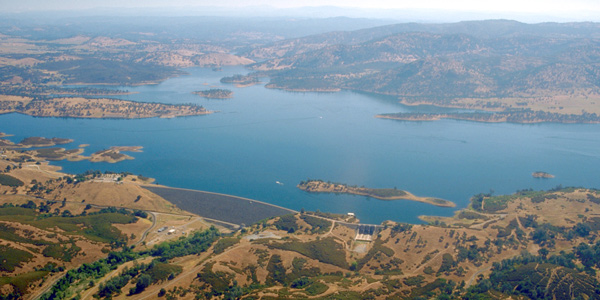By Michael Brooks
Use-limited resources will be allowed to attach opportunity cost adders to their bids in CAISO’s energy market under a proposal approved by FERC on Thursday.
The change was the only significant part of a package of Tariff changes — proposed in March in phase 3 of CAISO’s Commitment Costs Enhancements initiative — that the commission approved (ER18-1169). FERC rejected the ISO’s proposals to alter the information generators are required to submit to its Master File (a database of all resources participating in its markets and their characteristics) and to remove all ramp rates as components of daily bids.
The initiative is separate from, but related to, CAISO’s Commitment Costs and Default Energy Bid Enhancements; both involve better reflecting resources’ costs in their offers, thus improving market efficiency.
Use-limited resources are those that have limits on the number of start-ups and runtime hours, or on energy output, over a certain period. Small hydro facilities, for example, are automatically classified as use-limited resources by CAISO, while other resources must submit a request that includes certain data to be classified.

The 3-MW New Hogan Dam in Calaveras County, Calif. Small hydro facilities such as Hogan are automatically classified by CAISO as use-limited resources. | U.S. Army Corps of Engineers
But because the ISO’s market optimization software makes unit commitment decisions only one day ahead, it cannot take into account that dispatching a use-limited resource may hinder its ability to run later. As a result, the resources’ opportunity costs are not reflected in their offers.
CAISO said the changes are necessary because of the increase of variable energy resources on its system, making supply more unpredictable and use-limited resources necessary at any given time.
The opportunity cost adder that FERC approved “will capture the value of a use-limited resource’s limited availability so that the use limitation is not reached until the end of the monthly or annual use limitation period and the resource may be dispatched when it is valued most,” it said.
As part of the changes, effective Nov. 1, CAISO will all but eliminate one of the two methodologies under which use-limited resources are able to bid — the registered cost method. Under that approach, resources can elect to submit fixed commitment costs on a 30-day basis. CAISO told the commission that most use-limited resources use this method because it better reflects their opportunity costs and limitations, but because the costs are fixed, it cannot reflect variables such as the daily fluctuations of natural gas prices.
Use-limited resources will be required to use the proxy cost method, in which resources submit bids based on their start-up, minimum load and transition costs at a 125% cap. Resources less than a year old may still employ registered costs because, CAISO said, it needs a sufficient price history to calculate the adder.
“We find that the proposal is an improvement over the existing commitment cost recovery mechanism because the market optimization tool will be able to dispatch use-limited resources when they are most needed,” FERC said.
However, FERC agreed with NRG Energy’s protest of CAISO’s method for calculating opportunity costs. The commission ordered CAISO to submit within 30 days more details on its calculations as part of its Tariff revisions; the ISO had proposed to include them in its business practice manual.
The Master File
FERC rejected CAISO’s proposal to replace resources’ listed physical characteristics in the Master File with “design capability values,” information that reflects their capabilities when operating at maximum sustainable performance over a minimum run time. The ISO also proposed to allow scheduling coordinators to register “market values,” such as maximum daily start-ups, maximum daily number of transitions, operational ramp rates, operating reserve ramp rates and regulation ramp rates. CAISO said this would allow the market to consider, for example, that “a resource may be designed to start up five times a day, but starting it up more than twice a day could dramatically increase wear and tear and increase the probability of catastrophic failure.”
“We are concerned that, outside of exceptional dispatch, CAISO’s proposal does not include a mechanism to ensure that market values cannot be used to undermine the market’s economic resource dispatch when transmission constraints or other supply limitations create opportunities for the exercise of market power,” FERC said.
Using the market values instead of the design capability values may reduce available capacity, the commission said. “Permitting market participants to make less capacity available to the market raises the potential for physical withholding, which can affect dispatch and increase energy and ancillary service prices that may benefit the market participants’ affiliated resources. At times of tight supply conditions, it is more likely that withholding capacity could be a profitable action.” FERC also noted that CAISO proposed no new market mitigation measures to address this concern, and that its existing measures would be insufficient to handle the change.
Because CAISO predicated its proposal to remove ramp rates from daily bids on the changes to the Master File, FERC summarily rejected this as well. “If we were to accept the ramp rate proposal and reject the Master File proposal, scheduling coordinators would lose the flexibility currently afforded to them by the existing daily bid-in ramp rate functionality,” it said.




